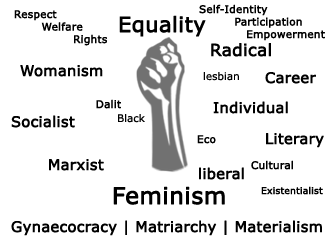Article Title :
The State of Affairs of Pangal Women: A Feminist Perspective 
3 (2019)
10-20
Social Condition , Political Condition , Pangal women , Meitei , Economic Condition


The Pangal community is one of the indigenous communities in Manipur state which lies at the north eastern corner of India. The representation of Pangal women and their condition in terms of polity, society and economy through the lens of feminist perspective in Manipur is minimal and extended to the village/local level only. The paper tries to answer in an integrated way some of the pertinent questions in respect of Pangal women. In this context, an attempt has been made to explore the historical background of the origin of Pangal in Manipur. This paper has also attempted to critically examine the economic, political and social conditions of Pangal women in the light of feminist point of view from the medieval to the post-colonial periods.

This paper tries to answer regarding representation of Pangal women and their overall condition in the society.
Discussed historical, demographical, economical, educational and social condition of Pangal women.
Primarily based on secondary data but also target interview of subset of population by strata sampling.
Conclude with the finding of lack of participation in decision making, a serious concern for Pangal women.
Acharya, N. N., 1984. The History of Medieval Assam. New Delhi: Omsons Publications (Reprint).
AISHE [All India Survey on Higher Education], 2017-18 and 2018-19. Ministry of Human Resource Development (MHRD), Government of India.
Bhattacharjee, J. B., 2012. Historians and Historiography of Northeast India (Ed.), Akansha Publishing, New Delhi.
Chattopadhyaya, B. D., 2017. Representing the Other: Eighth to Fourteenth Century. Primus Books, New Delhi.
Devi, K. K., 2014. Dawn of Muslim Women Education at Lilong (Manipur state, India). International Journal of English, Language, Literature, and Humanities, 2(1), 34-44.
Dun, E. W., 1992. Gazetteer of Manipur. Manas Publications (Reprint), Delhi.
Gulati, L., 1975. Occupational Distribution of Working Women: An Inter-State Comparison. Economic and Political Weekly, 10(43), 1692-1695.
Habib, I., 1982. An Atlas of the Mughal Empire. Oxford University Press, New Delhi.
Hossain, M., Bose, M. L. and Ahmad, A. 2004. Nature and Impact of Women’s participation in economic activities in rural Bangladesh: Insights from household surveys. Working Papers, Department of Economics Lund: Lund University, 20, 1697-1704.
Irene, S., 2010. The Muslims of Manipur. Kalpaz Publications, New Delhi.
Kamei, G., 1991. History of Manipur: Pre-Colonial Manipur. National Publishing House, New Delhi.
Kamei, G., 2006. On History and Historiography of Manipur. Akansha Publishing, New Delhi.
Khan, C., Kadir, Md. and Sarwar, R. M., 2015b. Status of Education among the Muslims of Manipur: Prospects and Challenges. The Journal of Social Science Scholar, 2(4), 96-109.
Khan, C., 2014a. The Origin of Manipuri Muslims. Indian History Congress (IHC) held at JNU, 1-11. (Unpublished).
Khan, C., 2014b. Socio-Cultural and Religious Facets of Manipuri Muslims during the 17th and 18th Centuries. International Journal of Research 1 (8), 1451-1482.
Khan, C., 2015a. The Formation of Muslim Community in Manipur during the 17th and 18th Centuries. Jawaharlal Nehru University (Unpublished M. Phil Dissertation), New Delhi.
Khan, C., 2016. Settlement and Migration of Muslims in Northeast India with special reference to Manipur. The Quarterly Review of Historical Studies LVI (1 and 2), 31-53.
Khan, C., 2017. Status and Contributions of Muslims in Manipur. Man and Society- A Journal of North East Studies, 14, 97-123.
Khan, C., 2019. The Origin of Manipuri Muslims during the Seventeenth and Eighteenth Centuries. Thon’g. Sylhet: Manipuri Muslim Community of Bangladesh.
Khan, C., 2020. Place of Minority in the changing dynamics of Education. In Chaudhury, Dr. Pradeep Kumar and Babu, Dr. Suresh. Ed. Contextualizing Educational Studies in India: Location of Research, Policy and Practices. London: Routledge Publication (Forthcoming).
Nathan, M., 1936. Baharistan-i-Ghaybi- A History of the Mughal Wars in Assam, Cooch Behar, Bengal, Bihar and Orissa During the Reigns of Jahangir and Shahjahan, tr. M. I. Borah, 2. Guwahati: Department of Historical and Antiquarian Studies (DHAS).
Parratt, J., 1998. Notes on Meithei (Manipuri) Beliefs and Customs. Imphal: Manipur State Archives, Government of Manipur.
Parratt, S. N. A., 2005 and 2009. The Court Chronicle of the Kings of Manipur: The Cheitharon Kumpapa, 1 and 2. London: Routledge.
Prasad, P., 1994. The Turushka or Turks in Late Ancient Indian Documents. Proceedings of the Indian History Congress. Aligarh: 55th Session.
Rafayattullah. 1997. Yaddasht Kursi-Nama, Lahore. 1929. tr. Maulana Muhammad Jalaluddin et al., Imphal: Circles.
Report on Socio-Economic Survey of Meitei Pangals (Manipuri Muslims), 2004, Directorate of Eco. & Statistics and Directorate of MOBC, Government of Manipur.
Salam, A., 2006. Political Participation of Muslims in Manipur, (1948-2000). Canchipur: Manipur University (Unpublished Ph. D Thesis).
Shah, A. H. K., 2008. The Manipur Governance to the Meetei-Pangal (Manipuri Muslim), Pearl Publication, Imphal.
Shah, M. B., 2009 Muslim Women and HIV/AIDS in Manipur, a seminar paper (unpublished).
Shah, R. A., 2007. Status of Muslim Women in Manipur State. Seminar Paper (Unpublished), Imphal.
Shahni, P. S., 2018. The Political and Social Conditions of Manipuri Muslim Women. The Khonthang (The Echo of Pangal). New Delhi: DAMMS Annual Magazine.
Singh, O. B. and Khan, M. A. J., 1973. Nongsamei Puya. Imphal: Manipur Stationery and Printing Industries.
Singh, R. K. S., 1985. Pangal Thorakpa. Liberty Publication Association, Imphal.
Sircar, M. C., 1984. Feminism in a Traditional Society: Women of the Manipur Valley. Vikas Publishing House.






